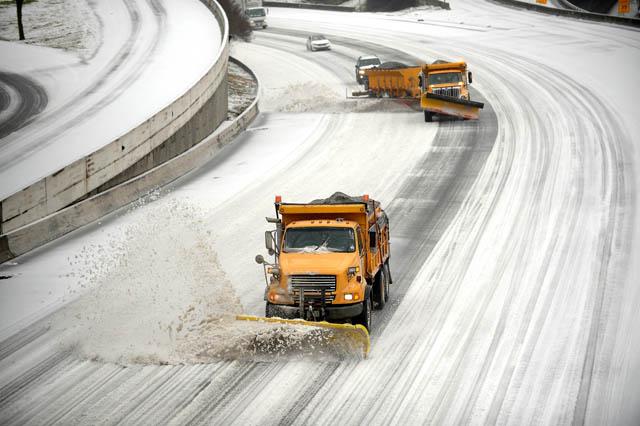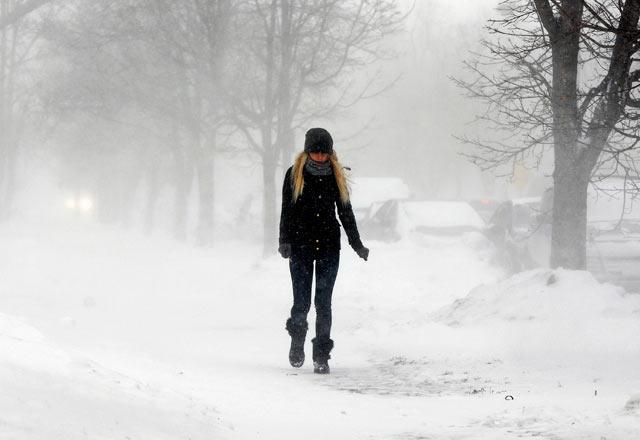ATLANTA — A deadly winter storm brought heavy snow, freezing rain and a possibly historic accumulation of ice to the southeastern United States on Wednesday, causing hundreds of thousands of power outages and treacherous driving conditions, meterologists said.
The worsening storm stretched from eastern Texas to the Carolinas and was likely to reach the Middle Atlantic states by late Wednesday, National Weather Service meteorologist Roger Edwards said.
Power outages spread rapidly as temperatures dropped.
More than 110,000 Georgia Power customers were without electricity on Wednesday, with most outages reported in metropolitan Atlanta. Some customers may have to wait up to a week for power to be restored, said Georgia Power spokeswoman Amy Fink.
“It does appear that the storm could have an even greater impact than we originally had predicted,” she said.
The wintry mix had already caused two weather-related traffic deaths in Mississippi and three in northern Texas earlier in the week, authorities said. The state Highway Patrol in South Carolina had responded to 273 weather-related calls for service overnight.
Nearly 3,000 US flights were cancelled and hundreds more delayed early on Wednesday, according to flight-tracking website FlightAware.com.
Hartsfield-Jackson International Airport in Atlanta was hardest hit, with more than 800, or 69 per cent of flights, cancelled, FlightAware.com said. Delta Air Lines and AirTran, the two dominant carriers there, had the most cancellations as of Wednesday morning.
“Atlanta is all but shut down. None of our approximately 155 departures scheduled for today is operating,” said spokesman Brad Hawkins of Southwest Airlines, which operates AirTran.
Up to 2 cm of ice was expected in a broad section of Georgia, including metropolitan Atlanta. Some areas could see more than 2.5 cm.
The Interstate 20 corridor from north central and northeastern Georgia into South Carolina would be among the hardest hit by icy conditions, said meteorologist Edwards.
Snowfall totals were expected to be unusually high in the region, with nearly 20.3 cm forecast for Charlotte, North Carolina and 22.9 cm for Spartanburg, South Carolina. Parts of the state, from the mountains to the coast, had already seen heavy snowfall.
“It is going to be a tough 48 hours,” said North Carolina Governor Pat McCrory, noting that toppled trees and downed power lines were likely to create hazardous travel conditions.
Edward Clay, 40, who lives in Greer, South Carolina, decided against driving to Asheville, North Carolina, for his job as a construction project superintendent, even though snow flurries were just beginning.
“I could get to Asheville easy,” he said. “Getting back to South Carolina is the problem. It’s going to be an all-around bad day to be on the road.”
Government officials were quick to make plans to deal with the impact of the storm, following another two weeks ago that paralysed Atlanta-area roads and forced more than 11,000 students in Alabama to spend the night at their schools.
Hundreds of schools and government offices across the South were closed on Wednesday, and shelters were opened in Georgia and Alabama to help those stranded by the storm.
Conditions deteriorated overnight as a swath of the Deep South, from Alabama through South Carolina, was deluged with rain, sleet and snow, Edwards said.
A tractor-trailer carrying milk jack-knifed on Interstate 285 around Atlanta early on Wednesday, said state transportation department spokeswoman Natalie Dale.
Overall, the traffic volume was light.
“People really seem to be heeding the warnings and staying off the roads,” Dale added.
The last significant ice storm in Georgia was in January 2000, when up to 1.3 cm of ice left more than 350,000 people without power, weather service meteorologist Dan Darbe said.
With the latest storm, “we’re talking a much larger area and a much larger amount of ice”, he said.
Winter storm watches reached into the Northeast, where heavy snow and possible ice was expected as the storm moved up the eastern seaboard on Thursday.




















